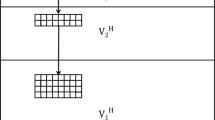Abstract
With the continuous development of multimedia technology, digital image and video data show a massive growth. Many files containing image and video data often need to be exchanged between different users and systems, which requires effective methods to store and transfer these files. The application of video image compression and coding technology is more and more extensive. Its outstanding problem is the large amount of data, requiring a lot of transmission bandwidth and high real-time. The traditional Set Partitioning in Hierarchical Trees (SPIHT) algorithm has the disadvantages of repeated operation and large storage. In order to ensure the real-time image transmission, obtain high compression ratio and reduce the loss of image information, a new improved algorithm for image compression technology is proposed. The improved algorithm MSPIHT (modified SPIHT) introduces fast lifting wavelet transform to improve the transformation process and threshold optimization to improve the quality of real-time image restoration. Simulation results show that the improved method can reduce the loss of video stream image information, and has good real-time performance.








Similar content being viewed by others
References
Anjaneya P, Rajini GK (2020) High efficiency dense light field and all-in-focus compression for lossless satellite image by using CCSDS. Int J Speech Technol 23(4):737–745
Cai Y, Zou H, Yuan F (2019) Adaptive compression method for underwater images based on perceived quality estimation. Front Inf Technol Electron Eng 20(5):716–730
Dua Y, Kumar V, Singh RS (2020) Comprehensive review of hyperspectral image compression algorithms. Opt Eng 59(9):090902
Esmaiel H, Qasem ZAH, Sun H et al (2019) Underwater image transmission using spatial modulation unequal error protection for internet of underwater things. Sensors 19(23):5271
Feng W, Hu C, Wang Y et al (2019) A novel hierarchical coding progressive transmission method for WMSN wildlife images. Sensors 19(4):946
Galan-Hernandez JC, Alarcon-Aquino V, Starostenko O et al (2018) Wavelet-based frame video coding algorithms using fovea and SPECK. Eng Appl Artif Intell 69:127–136
Gu Y, Yang H, Yan B et al (2019) Digital image self-recovery algorithm based on improved joint source-channel coding optimizer. Multimed Tools Appl 78(15):21041–21064
He F (2019) Exploration of distributed image compression and transmission algorithms for wireless sensor networks. Int J Online Biomed Eng (iJOE) 15(01):143–155
Hellel O, Beladgham M, Lakhdar AM (2019) Study of performance of a ‘second-generation wavelet video encoder with a scalable rate.’ IET Image Proc 13(4):698–706
Hsieh JH, Shih MJ, Huang XH (2018) Algorithm and VLSI architecture design of low-power SPIHT decoder for mHealth applications. IEEE Trans Biomed Circuits Syst 12(6):1450–1457
Kabir M, Mondal M (2018) Edge-based and prediction-based transformations for lossless image compression. J Imaging 4(5):64
Kim HY, Lee SW (2019) An error resilience and concealment method for line-based wavelet image compressions. IEIE Trans Smart Process Comput 8(5):347–357
Kong F, Hu K, Li Y et al (2020) Spectral-spatial feature partitioned extraction based on CNN for multispectral image compression. Remote Sens 13(1):9
Lahdir M, Hamiche H, Kassim S et al (2019) A novel robust compression-encryption of images based on SPIHT coding and fractional-order discrete-time chaotic system. Opt Laser Technol 109:534–546
Lee RC, Hung KC (2019) New modified SPIHT algorithm for data compression system. J Med Biol Eng 39(1):18–26
Li J, Fu B, Liu Z (2019) Panchromatic image compression based on improved post-transform for space optical remote sensors. Signal Process 159:72–88
Pandit S, Shukla PK, Tiwari A et al (2020) Review of video compression techniques based on fractal transform function and swarm intelligence. Int J Mod Phys B 34(08):2050061
Pillai KGR, Radhakrishnan K, Ramakrishnan D et al (2020) Compression based clustering technique for enhancing accuracy in web scale videos. Multimed Tools Appl 80:7077–7101
Salih YA, Mohammed AA, George LE (2019) Improved image compression scheme using hybrid encoding algorithm. Kurd J Appl Res 4(2):90–101
Sang J, Akbar MA, Cai B et al (2018) Joint image compression and encryption using IWT with SPIHT, Kd-tree and chaotic maps. Appl Sci 8(10):1963
Sran PK, Gupta S, Singh S (2020) Segmentation based image compression of brain magnetic resonance images using visual saliency. Biomed Signal Process Control 62:102089
Yuan F, Zhan L, Pan P et al (2020) Low bit-rate compression of underwater image based on human visual system. Signal Process: Image Commun 91:116082
Zhang H, Wang X, Sun Y et al (2020) A novel method for lossless image compression and encryption based on LWT, SPIHT and cellular automata. Signal Process: Image Commun 84:115829
Funding
Special scientific research project of Shaanxi Provincial Department of Education (2019) Application of content-based image retrieval algorithm in x-ray point feeder (19JK0288).
Author information
Authors and Affiliations
Corresponding author
Additional information
Publisher's note
Springer Nature remains neutral with regard to jurisdictional claims in published maps and institutional affiliations.
Rights and permissions
About this article
Cite this article
Zhai, L., Sheng, D. Image information loss estimation of video stream based on improved SPIHT algorithm. Multimed Tools Appl 81, 36275–36291 (2022). https://doi.org/10.1007/s11042-021-11572-x
Received:
Revised:
Accepted:
Published:
Issue Date:
DOI: https://doi.org/10.1007/s11042-021-11572-x




